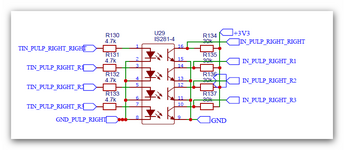bulletbolt
Newbie level 4
Hello all,
Looking for people opinions on how to implement embedded solution with 250+ IO's.
The system would work in such principle that one pin is set to output while all others are inputs. Then it changes to next pin being output and all others inputs.
Looked at IO expanders and potentially using multiple MCU's, but what are your thoughts?
Looking for people opinions on how to implement embedded solution with 250+ IO's.
The system would work in such principle that one pin is set to output while all others are inputs. Then it changes to next pin being output and all others inputs.
Looked at IO expanders and potentially using multiple MCU's, but what are your thoughts?
